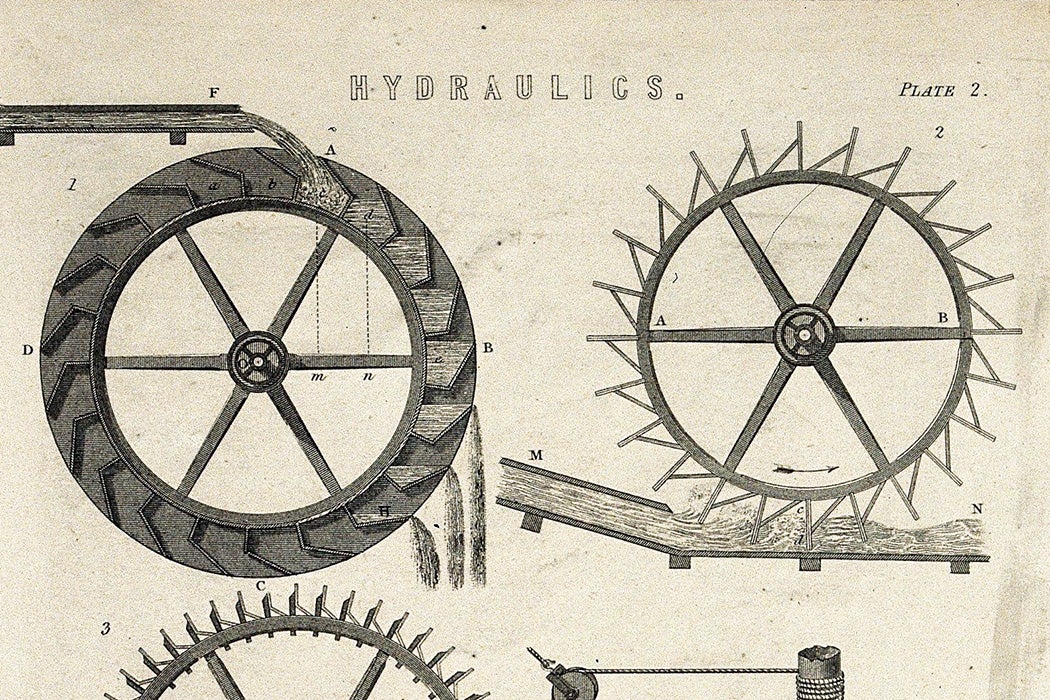In the middle of the eighteenth century, the economies of the United Kingdom and France were booming. Mills across the region churned out flour, textiles, and lumber. Their machinery was powered by flowing water, harnessed by an old technology—the water wheel. As demand for power increased, Europe’s top scientists and engineers tried to create a better wheel.
Historian Terry S. Reynolds explains that their efforts are “sometimes cited as an early example of the successful application of science to technology.” But he argues that in reality, the episode shows how the relationship between science and technological development is complex and often indirect.
Water wheels mostly come in two forms. In “undershot” water wheels, water flows beneath the wheel, pushing against paddles and turning the wheel. In “overshot” water wheels, water flows over the top of the wheel into “buckets.” The weight of filled buckets pulls the wheel down.
Reynolds writes that scientists largely believed that “impulse and gravity were equally effective as motive powers,” meaning there was little difference between the two types of wheel. French mathematician Antoine Parent built on this, coming to the conclusion that all water wheels had a very limited maximum efficiency. Parent’s theory was flawed, but that may have motivated others to investigate.
“Bad theories are often better than no theories at all,” Reynolds writes, “since they may provide a stimulus toward additional work.”
Antoine de Parcieux confronted Parent’s theory when he was hired by Louis XV to build a water supply for a chateau. De Parcieux’s job was impossible according to Parent’s theory, so he thought through the problem practically. His key insight was that the overshot wheel should operate “like an infinite series of falling weights,” writes Reynolds. De Parcieux devised a small-scale experiment with a 20-inch wheel and concluded that the overshot wheel could attain extremely high efficiency.
John Smeaton, an English engineer, had similar problems with Parent. Smeaton “had the practical technician’s distrust of theory,” writes Reynolds, and desired a practical demonstration. He rigged models to lift a weight and compared different types of water wheels. His experiments showed that the overshot wheel was at least twice as efficient as the undershot wheel.
Weekly Newsletter
Astronomer and mathematician Johann Albrecht Euler, in contrast, wanted to solve the problem theoretically. Euler built on the work of his famous father, Leonhard Euler, and theories from Daniel Bernoulli. He incorporated the weight of the water and the height of the fall into calculations, and he also came to the conclusion that the overshot wheel would be more efficient.
But Euler’s work had a limited impact on real-world engineering, argues Reynolds. Engineers directly cited Smeaton and de Parcieux, with one even claiming that Smeaton’s work “delayed for decades the introduction of steam power into British manufacturing.” In contrast, Reynolds writes that engineers viewed arguments like Euler’s as “either incomprehensible or insufficient.”
A flawed scientific theory motivated Smeaton and de Parcieux, and they used some theory to guide their thinking. But ultimately, Reynolds argues, it was their practical experiments that influenced technological development.







